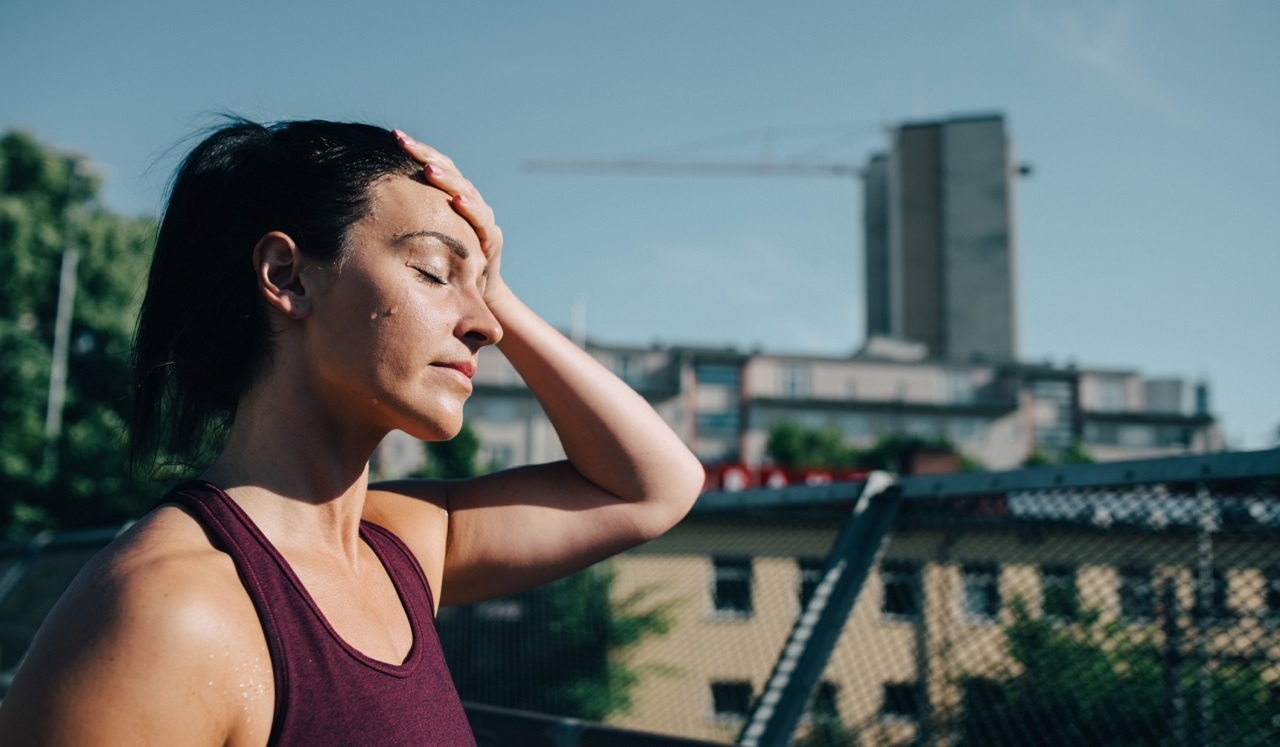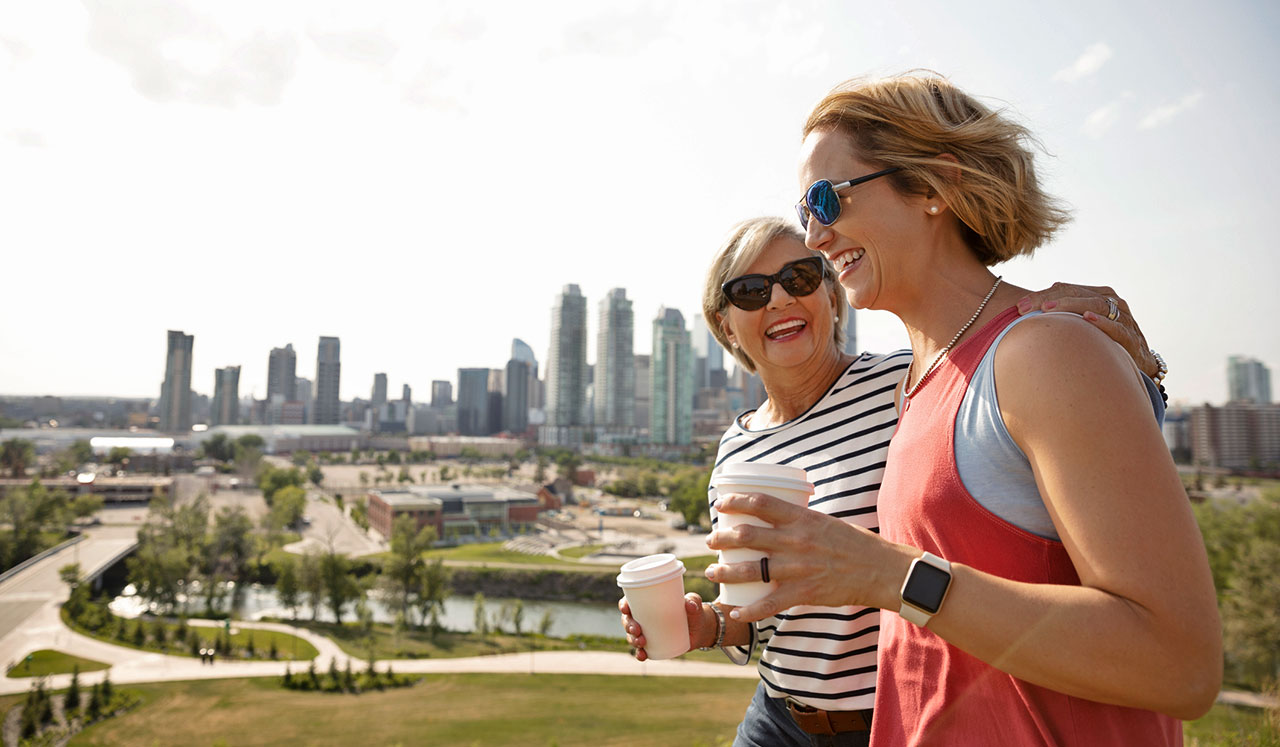Hot temperatures hit Houston early this year. That means we must be safe when outside—especially when the downside is a potentially life-threatening illness such as heat exhaustion or heat stroke. But how?
Ready to help with the cold facts—and ways to stay safe—is Abhilash Davlapur, MD, primary care and sports physician at MHMG Primary Care Sports Medicine.
Here are his tips to beat the heat:
Hot Topic: Heat Rash
Danger Signs: Your skin feels itchy, prickling and irritated – a condition that’s irritating in itself.
Cool Solution: When it comes to heat rash or any hot day outside, “wear thin, looser-fitting clothes and try to keep your armpits, groin and wherever you sweat as cool as you can,” Dr. Davlapur says. “Also wear clothes designed to dissipate heat.” Those should be made of natural fabrics such as cotton, which absorbs moisture and isn’t tightly woven, so it allows air to pass through. Athletic fabrics that wick away moisture also help. “And lighter shades are good.” Black absorbs heat. White reflects it. But keep in mind that it’s good to sweat. That’s your body’s way of cooling you down.
Watch Out: Also known as “prickly heat,” heat rash forms as “little blisters or pimples on the chest, groin, neck, underarms, elbow creases – anywhere that you sweat,” Dr. Davlapur says. It happens when the skin’s sweat ducts become blocked, often where there are hair follicles. When sweat is trapped beneath the clogged skin, bacteria forms, causing a rash. Heat rash can go away after one or two days, but if untreated it can last for one or two weeks.
Targeted Activity: It’s best to avoid doing strenuous exercise when it’s very hot, since that causes the excessive sweating which can lead to heat rash. If you so work out in the heat, keep your skin as dry as possible and dress appropriately.
Hot Topic: Sunburn
Danger Signs: Your skin reddens—and you’re not embarrassed or blushing. Darker complexions may darken.
Cool Solution: Avoid prolonged sun exposure. Don’t wait for blisters to form, indeed, they may already be forming. Also, always lather up with sunscreen that has a sun protection factor (SPF) of at least 30 and has a broad spectrum to block UV rays.
Watch Out: If you don’t act to avoid sunburn, you can do just that—burn your skin. And like a burn from a flame, there are degrees. Tender or itchy skin can be the least of it. You also can suffer swelling, blisters, fever, nausea, fatigue and headaches.
Targeted Activity: Avoid spending too much time in the sun to do anything, from strenuous exercise to a leisurely walk. Limit outdoor exercise to early morning or evening. “That also includes swimming or rafting,” Dr. Davlapur says. “You can be at risk in or on the water. Water is cooler, but you still can get sunburned.”
Hot Topic: Heat Cramps
Danger Signs: You’re thirsty and fatigued, with heavy sweating, and your muscles start cramping. Teach your kids who do sports that cramps and exhaustion are warning signs and not something you soldier through—even if a coach says to.
Cool Solution: Water, water, everywhere. Dehydration causes the sudden, involuntary contractions of muscles known as cramps. “When facing heat, hydrate, hydrate, hydrate,” Dr. Davlapur says. “You never can drink enough water.”
Watch Out: But don’t drink too much water all at once. It may upset your stomach.
Targeted Activity: How much you should drink depends on your activity level—and the type of liquid. “If you’re exercising for fitness with excessive activity, you might also need electrolytes in your water,” he says. The body loses electrolytes’ vital minerals when it sweats— or, sorry, when ladies dew. To compensate, eat bananas or watermelons, guzzle fruit juice, sports drinks or Gatorade Zero, or try packets with concentrated electrolytes which you can mix with water. “Pickle juice also is great,” Dr. Davlapur says. “It’s probably the best thing for cramps due to dehydration.”
Hot Topic: Heat Exhaustion
Danger Signs: The dashboard of your body flashes many warnings as it struggles to cool your body: a faster pulse, feeling cold, with pale, clammy skin, nausea, vomiting and muscle cramps in your limbs. You also may be dizzy, confused, have headaches and feel faint, shaky, tired or weak. “You’re dehydrated so your body doesn’t get enough volume of blood,” he says. “The heart then beats faster to maintain blood circulation.”
Cool Solution: The time to take quick action against heat exhaustion is when you start having cramps, Dr. Davlapur says. “Pour water over your head and, if you have ice, place it at the armpits and everywhere else you can. Also wrap and icy, damp towel around your neck. But don’t wait: Call 911 promptly. You are entering the danger zone – and may need an ambulance.” If you’re with someone else who faints from heat exhaustion, “call an ambulance, cool them as best you can and get their legs elevated.”
Watch Out: If not treated promptly, heat exhaustion can lead to an even worse condition: heat stroke.
Targeted Activity: Strenuous physical activity, high humidity and heat are a bad mix if you want to avoid heat exhaustion. If it’s too hot to exercise strenuously, then don’t. And even if you tone it down, be sure to drink enough water and to wear light, reflective clothing.
Hot Topic: Heat Stroke
Danger Signs: “With heat exhaustion you may be tired, dizzy or confused, but with heat stroke you’re exhausted and mentally disoriented, and that’s a big difference,” Dr. Davlapur says. Heat stroke happens when the sweating mechanism fails and the body can’t control its temperature, which rises rapidly, and the body is unable to cool down. Body temperature may reach 106 degrees, a dangerous level. Even at 103 degrees, you’re in the danger zone.
Cool Solution: “Cool someone down right away,” he says. “Maybe place them in cold water in a bathtub, or put ice under their armpits and anywhere else.” Take the victim’s clothes off so more surface area can cool by dissipating heat. Then, if they’re conscious, get fluids in them. “Overhydrate with cold water – and prepare to send them to an emergency room,” Dr. Davlapur says. “Cold first, then 911.”
Watch Out: When untreated, heat stroke can quickly damage the heart, brain, kidneys and muscles, and such damage gets worse with delays. Heat stroke can cause serious complications and even death.
Targeted Activity: While anyone who works out or exercises intensely in hot weather can suffer heat stroke, it’s more likely to happen to those who aren’t accustomed to high temperatures. “Recently we had a cricket tournament in Houston, and the team from Scotland first went to UAE to do heat acclimatization,” Dr. Davlapur says. “By training in a hotter place than at home, they got acclimated to that temperature in spurts – a half-hour the first day, then more. If you’re not used to exercising when it’s 90 degrees, it’s a bad idea.” Another rule of thumb, he says, is to “start slowly, then ramp up. When you try new exercises, start at 50%, then increase gradually.”
Bonus Tip: For any extended time in the sun or heat, Dr. Davlapur recommends using a WetBulb Globe Temperature device to assess the environment’s heat stress on your body. Along with wind speed and other factors, “it takes into account humidity and temperature.”
The instrument then shows black, meaning you should not exercise outside; red to orange, meaning you should be cautious or perhaps delay activity; yellow, meaning you may do an activity, “but it’s less than ideal, so take frequent breaks to drink water”; or green, “meaning conditions are good to go ahead.”

